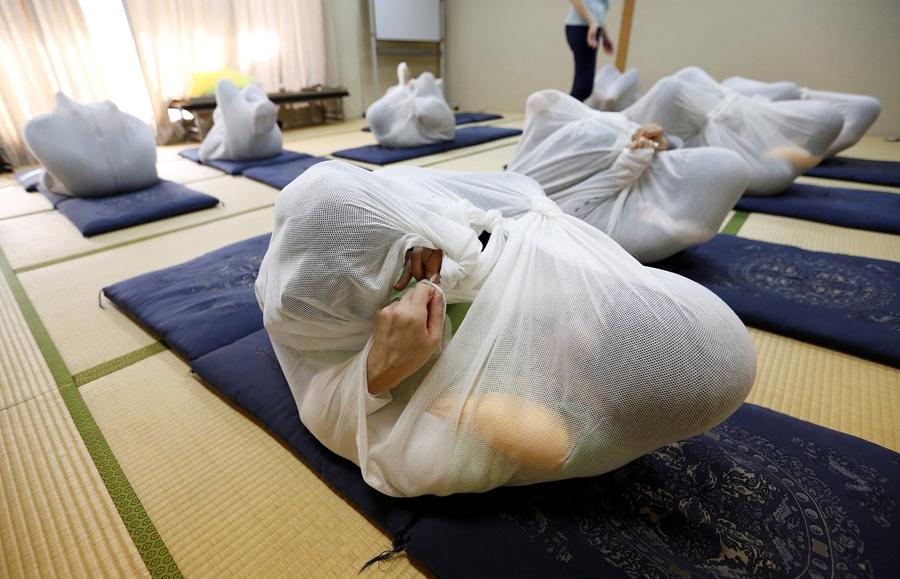Otonamaki: the Japanese technique of wrapping in a fabric to relax
Suscríbete a nuestro newsletter semanal aquí
Generating the feeling of being in the womb by wrapping up in fabrics-while the body relaxes and improves the posture-is the idea that lies behind the Otonamaki.
This Japanese anti-stress technique was developed by a midwife, Nobuko Watanabe, which is based on the practice of Ohinamaki: wrapping newborn babies to help them sleep better, offer them a feeling of greater safety, and help with their physical development.
Since 2015 this relaxation proposal has gained popularity in Japan. It seeks to reach the stage of harmony by wrapping practitioners in a fetal position in a large fabric. The sessions last 20 minutes, during which people stay on a mattress looking up.
Discover:

5 benefits of mindfulness that will make you love this ancestral practice
Sukshma Vyayama: the discipline of yoga that connects the spiritual part
The benefits of Otonamaki include helping the body become more flexible, relieving stiffness of the shoulders, neck, and expanding joint movements. Although those who guide these sessions claim that the most interesting effect is how, being rolled into the elastic white fabric, the mind feels free.
During the preparation process people can select the position of their legs, arms and head, with the aim that they are as comfortable as possible. Although it covers the entire head, it is not difficult to breathe, because the fabric is mesh.
For those with claustrophobia, however, the experience may not be so relaxing. Therefore, you can also choose not to cover your head.
Otonamaki is directly translated as' adult wrapping'. One of the reasons why this therapeutic method was invented was because Japanese parents were concerned that their babies would have problems or feel claustrophobic while they were being sheltered.
You may also be interested: how to live the Japanese 'forest bath' experience in your home
In this way they could experience, by themselves, the sense of well-being produced by the Ohinamaki.
Follow us at:










Related Articles